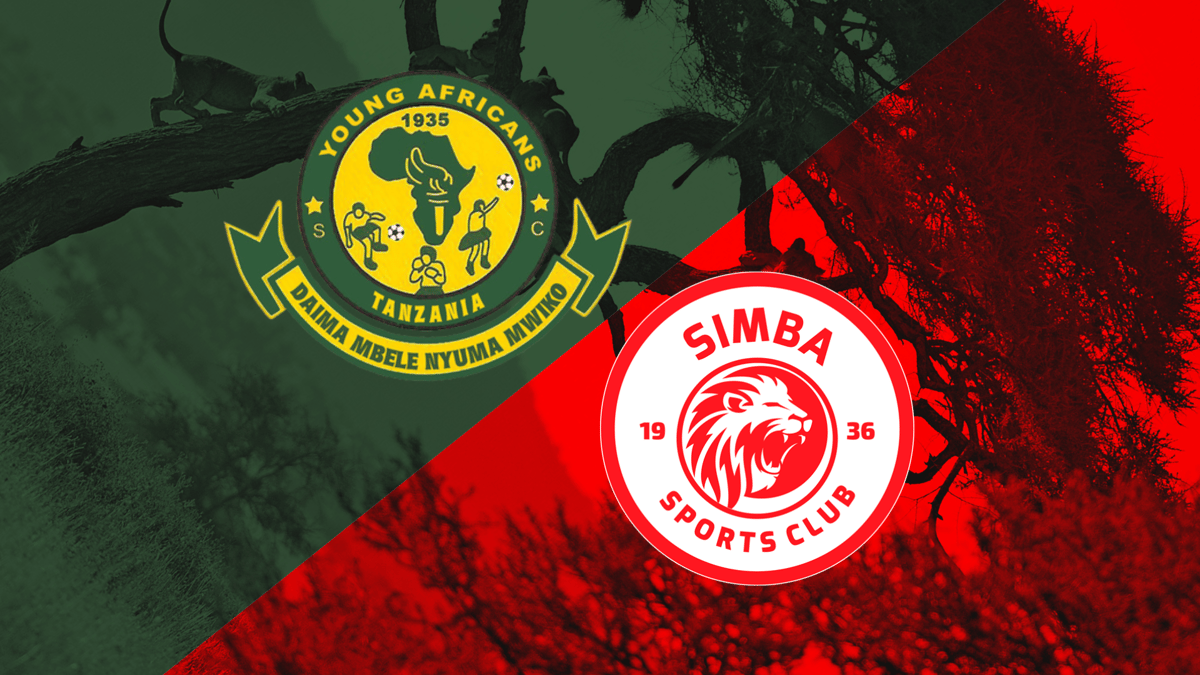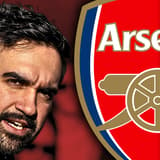-
News
- 3 hours ago
The biggest derby you've never heard of

"Today, dust and sweat!"
The chant rings out across the stadium with flares lighting up the night sky as thousands of fans taunt their city rivals.
These scenes would be expected in huge footballing cities like Glasgow, Madrid, Buenos Aires or Rio de Janeiro.
Instead, it is the humid equatorial air of Dares Salaam that is lit up by the supporters of Young Africans SC as they celebrate a title-winning victory over their fierce rivals Simba SC in the Kariakoo Derby.
It's not just the 40,000-plus Yanga fans that celebrate as they leave the Benjamin Mkapa National Stadium; half of Tanzania will have been erupting in celebration, from the tightly packed streets of Dar es Salaam to the sleepy villages on the slopes of Mount Kilimanjaro. That is how deeply the rivalry between East Africa's biggest clubs go. As one fan puts it: "If you're Tanzanian, you're either Simba or Yanga - there is no neutral."
Between them, the two clubs have won the Tanzanian league 52 times in 65 years, including every title over the past decade. Two neighbouring teams dominating a particular division is not unheard of, but what sets the Kariakoo Derby apart from other local rivalries around the globe is how intertwined the clubs are. In fact, they were once the same team.
In the 1920s, Dar es Salaam was a relatively young city, founded as the colonial administrative centre of then German East Africa. While the Europeans lived in beautiful colonial districts near picturesque beaches, African labourers and porters who were brought to the city for work were forced to live in a settlement known as Kariakoo (the word literally is the Swahili-ized version of "carrier corps"). In their time off, labourers would play football on the nearby Jangwani grounds, eventually leading to the formation of Jangwani Sports Club in the 1920s.
The British colonial government, fearful of young African men organising and potentially overthrowing their rule, banned African football clubs until 1934, when the rules were relaxed, allowing the New Young club to form and join the local league.
Yet the club's early years were defined by in-infighting. By 1936, one group of fans had broken away to form their own club, Stanley FC, which would eventually be renamed Simba Sports Club, while the original team went on to become Young Africans Sports Club - AKA Yanga.
While Simba incorporated local Arabs and were seen as relatively indifferent to colonial rule, Yanga retained their anti-colonial identity and played a key role in bringing about an independent Tanzania. Like many other major clubs in Africa - Al Ahly in Egypt, Wydad Casablanca in Morocco and USM Alger in Algeria - Yanga served as a place for disgruntled Africans to meet and organise. Such was the importance of Yanga fans to the independence movement, that the Tanganyika African National Union - the political party that ended colonisation and was led by Julius Nyerere, the father of Tanzania - actually adopted Yanga's green kit as the party's colour.
It's this proximity that has created such a heated rivalry between the two clubs. They don’t simply share a city; they don’t even share just a neighbourhood; they share a past as one club.
Both sides still have their headquarters on different sides of Kariakoo, which is no longer a small settlement but East Africa's largest market. And both clubs have been able to retain a deep intimacy with their fanbases in large part thanks to their ownership models.
For Yanga’s entire history, the club has been completely fan-owned and controlled by members. Simba followed a similar model until 2016 when they opted to move to the 50+1 model where fans still retain a majority of shares but also have external investment.
That shared ownership has gone beyond Dar es Salaam and allowed the clubs to reach every corner of the country where they both have official fan groups in ever large town. From Mbeya on the southern border with Zambia, to Kagera on the banks of Lake Victoria, travelling fans from Simba and Yanga often outnumber the home support.
But despite the clubs being arguably the most fervently supported south of the Sahara, it is not one that is divided along community or sectarian lines.
Despite the passion, there is remarkably little aggression between fans. Most fierce rivalries in the world feature lots of policing, plenty of violence and often a heavy-handed separating of supporters pre-match. But in Dar es Salaam, the pre-match is more festival than battleground.
All along Taifa Road next to the National Stadium, there are stages blaring Afrobeats and Amapiano, beer tents are in full flow and mouthwatering selections of Swahili food are on offer in the shade provided by long gazebos. Aunties decked out in green or red sit selling anything from club phone cases to vuvuzelas. The contempt Yanga and Simba fans have for each other is one of twins who fight and play in equal measure.
Over past decades, the clubs had little, if any, influence beyond Tanzania's borders and at best could be considered the biggest derby only in East Africa, the continent's least successful footballing region. But over the last few years, the Kariakoo Derby has become one of the most watched matches in the whole of Africa and in terms of passion, spectacle and cultural importance now rivals the fiercest derbies in North Africa.
That change started in 2016 with Simba's change in ownership model, a model which allowed for 49 per cent of the club to be bought by Mohamed Dewji, Tanzania's richest man and Africa's youngest billionaire. Dewji's investment brought near immediate success with the club returning to the African Champions League in 2018 for the first time in 15 years. They have been regular qualifiers since and claimed their biggest result in the competition in 2021 when they beat Africa's most successful club, Al Ahly of Egypt, 1-0 in the group stage.
Yanga responded, not by restructuring the model of their club but instead bringing in record investment in the form of sponsorships.
However, the single most impactful investment came not from either club but from the league itself. In 2021, long-time rights holders to the Tanzania Premier League, Azam TV, signed a new TV deal worth $100 million over ten years, more than double what it paid for the previous deal.
Not only has that deal put money into Simba and Yanga's pockets, it has also improved the standards of the league as a whole - both on and off the pitch. TV infrastructure has been installed at every ground, smaller teams have professionalised and now provide stiffer competition for the two giants.
NEXT MATCH: Young Africans. #KariakooDerby #NgaoYaJamii2024 #WenyeNchi #NguvuMoja pic.twitter.com/xUkVDk5nOy
— Simba SC Tanzania English (@SimbaSC_EN) August 7, 2024
Even the refereeing has drastically improved as with more eyeballs and camera angles bringing greater transparency, instances of corrupt officiating almost vanished overnight.
Not only that, but with Azam holding sole rights to the league, they can broadcast across the world.
Ten years ago, the Tanzania Premier League was an obscure league in a nondescript corner of African football.
Now it is the only league in Africa where you can watch every single match from anywhere in the world.
And the results have been borne out on the pitch. Simba are now Champions League regulars and in 2023 were one of the eight teams invited to play in the newly-created African Football League, a project first announced and supported by Gianni Infantino and FIFA.
Yanga made their return to continental competition in 2016 after an 18-year hiatus when they played in the CAF Confederation Cup (the equivalent of the Europa League). In 2022-23, they made an historic run to the final where they lost to USM Alger, before this season making a return to the Champions League where they, along with Simba, qualified for the quarter-finals. In fact, Tanzania was the only country to have two representatives in the last eight of the competition.
Where the remarkable growth of the two teams is seen best though is not in the club game but at international level. Prior to 2024, no player from Simba or Yanga had represented a national team outside of East Africa at the AFCON. But in this year's tournament in Ivory Coast, Yanga's Stephane Aziz Ki played every match for Burkina Faso, his team-mate Djigui Diarra was Mali's starting goalkeeper and Simba's Henoc Inonga Baka was Chancel Memba's centre-back partner in DR Congo's run to the semi-finals.
It's a truly remarkable rise from the backwaters of African football.
As little as five years ago Yanga were in a position where, as one administrator put it:
"We didn't even have enough money to eat".
Now, thanks in part to April's 2-1 victory over their old rivals, they are celebrating a third consecutive Tanzanian league title.
As other leagues in Africa struggle to compete with European football for global attention, or fail to attract fans to stadiums because of government restrictions, the Kariakoo Derby is rapidly establishing itself as the biggest spectacle in African club football.
Words by Alasdair Howorth.


















